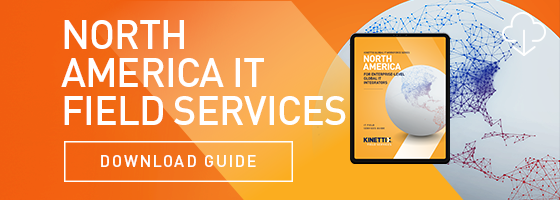There are many times a company might need to rely on a contingent workforce for a particular project. Plenty of companies hire contingent workers all the time, without waiting for a specific reason to arise. Whether you’re looking to bring in a specialist for a particular project or could use an extra set of hands on the job, freelance or contingent workers are a crucial part of global IT deployments and the information technology sector as a whole.
When employing contingent workers, though, you want to ensure you’re tracking metrics that accurately demonstrate their efficiency and performance, much like you would with traditional employees. Let’s take a look at some of the best metrics to evaluate your contingent workforce.
4 Key Performance Indicators for Your Contingent Workforce
1. Use of Time
When you hire a contingent worker, you want to ensure you’re maximizing their time spent on high-priority tasks and projects. By measuring and evaluating the usage of their hours, you can see how technicians are spending their time. For example, do they spend most of their time on the job site, or do tasks like traveling and paperwork take up most of their hours?
Once you understand your contingent workers’ day-to-day, you can finetune your documentation and scheduling procedures so technicians focus on what matters most — exceeding customer expectations. Similarly, you’ll make your technicians’ daily lives easier, which can improve retention and help you grow your talent pool.
2. Duration
Duration may overlap with the first KPI — but there are some key differences. “Use of time” refers to how your contingent workforce spends their day-to-day. Essentially, how many hours they spend on traveling, paperwork, and other auxiliary tasks every day. Duration, on the other hand, focuses on the assignment itself.
By measuring duration from the initial assignment through project completion and invoicing, you’ll get a sense of your technicians’ efficiency. You’ll also be able to identify trends, such as particular customers, projects, or products taking longer than others on average. Finally, you’ll want to monitor overtime to see if your workforce is stretched too thin.
3. Job Completion Rate
Like duration, job completion rate is another crucial metric for tracking efficiency. How many projects are being completed in a day, week, or month? The more quickly workers are able to finish a job, the more satisfied customers tend to be. Likewise, the more jobs your team completes as a whole, the better your margins are likely to be.
When measuring job completion rate, keep in mind that some jobs cannot be completed in a single visit. Combine this data with hours usage and duration, and you'll have a well-rounded snapshot of how efficiently your team is operating.
4. Contract Extensions
This data can be beneficial when you look at it in an aggregate format, versus for one particular worker. Track how many of your contingent workers ask for or are offered a contract extension. Conversely, see how many have their contracts terminated early. This KPI will give you important information about your talent pool of contingent workers and about how well your company works with them.
Keeping Track of KPIs
While we only listed four metrics here, there are many data points to track within each category. Keeping track of these metrics, however, can feel like an arduous task. Fortunately, leveraging a field service management (FSM) platform can help you keep track of these KPIs and improve not only your own efficiency but also your team’s.
A field service management platform can automatically track your technician’s locations and allow them to easily log what activities they’ve completed throughout a particular assignment. They can also use the platform to record images of the completed project, as well as any customer comments or concerns.
You’ll also be providing your technicians with a valuable tool that can save them time. They can access any and all documentation needed for a particular project while on the job by using this type of software. This will help them save time and eliminate the need for backtracking if they lose track of any paperwork.
Maximize Your Efficiency
Employing a contingent workforce is an excellent way to improve and diversify the services you offer your customers, as well as fill in any last-minute gaps in your team. By monitoring the right KPIs, you can know that your technicians are working efficiently and being productive for your company. Furthermore, implementing a field service management platform helps you track and evaluate those KPIs. If you’re ready to implement FSM software but need help with the rollout, give Kinettix a call today.






